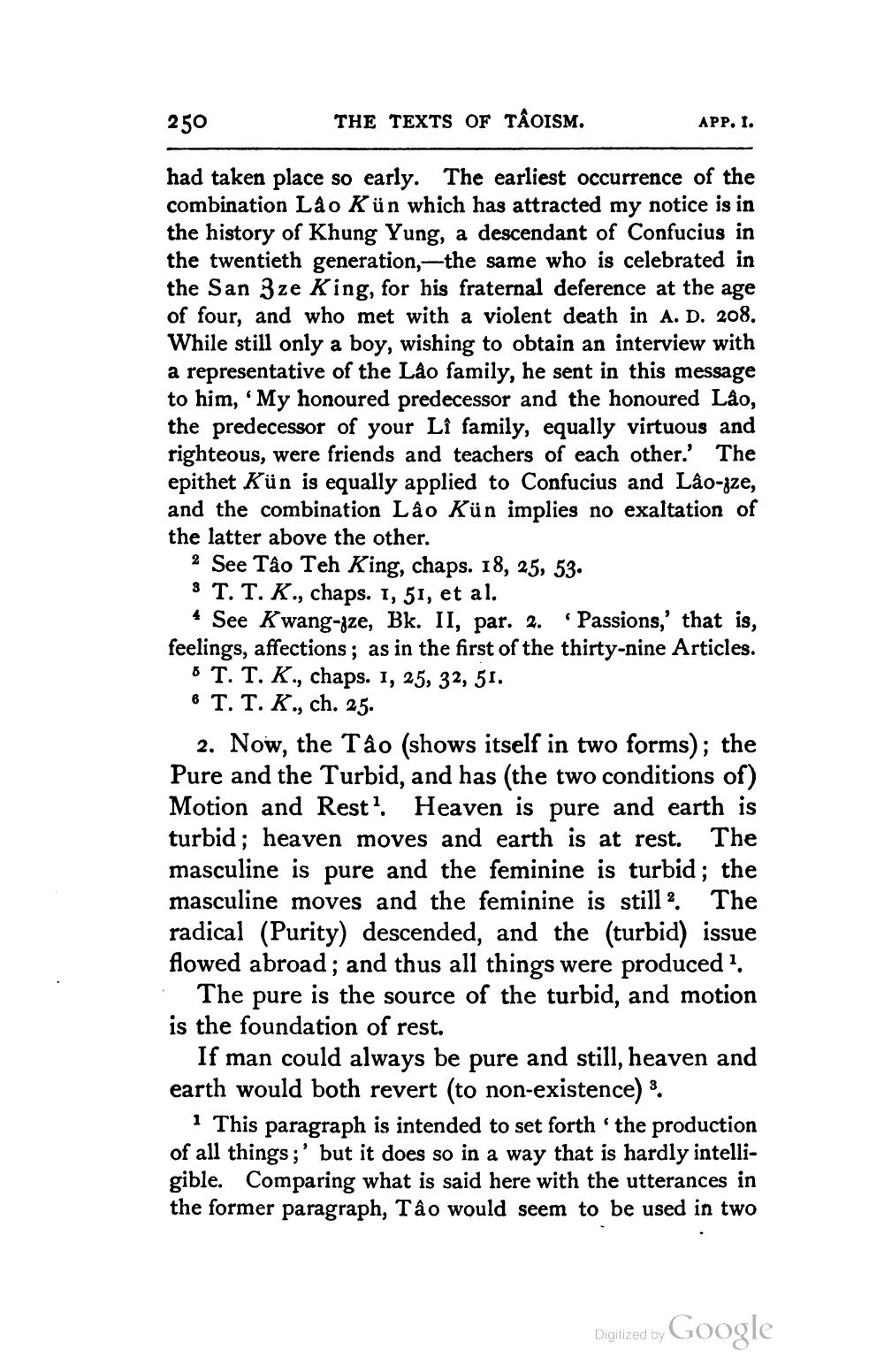________________
250
THE TEXTS OF TÂOISM.
APP. I.
had taken place so early. The earliest occurrence of the combination Lào Kün which has attracted my notice is in the history of Khung Yung, a descendant of Confucius in the twentieth generation.--the same who is celebrated in the San 3 ze King, for his fraternal deference at the age of four, and who met with a violent death in A. D. 208. While still only a boy, wishing to obtain an interview with a representative of the Lào family, he sent in this message to him, 'My honoured predecessor and the honoured Lào, the predecessor of your Lî family, equally virtuous and righteous, were friends and teachers of each other. The epithet Kün is equally applied to Confucius and Lao-gze, and the combination Lâo Kün implies no exaltation of the latter above the other.
2 See Tâo Teh King, chaps. 18, 25, 53. 3 T. T. K., chaps. 1, 51, et al.
4 See Kwang-sze, Bk. II, par. 2. Passions,' that is, feelings, affections; as in the first of the thirty-nine Articles.
5 T. T. K., chaps. 1, 25, 32, 51. 6 T. T. K., ch. 25.
2. Now, the Tâo (shows itself in two forms); the Pure and the Turbid, and has (the two conditions of) Motion and Rest? Heaven is pure and earth is turbid; heaven moves and earth is at rest. The masculine is pure and the feminine is turbid; the masculine moves and the feminine is still 2. The radical (Purity) descended, and the (turbid) issue flowed abroad; and thus all things were produced ?
The pure is the source of the turbid, and motion is the foundation of rest.
If man could always be pure and still, heaven and earth would both revert (to non-existence) 3.
1 This paragraph is intended to set forth the production of all things;' but it does so in a way that is hardly intelligible. Comparing what is said here with the utterances in the former paragraph, Tâo would seem to be used in two
Digitized by Google




